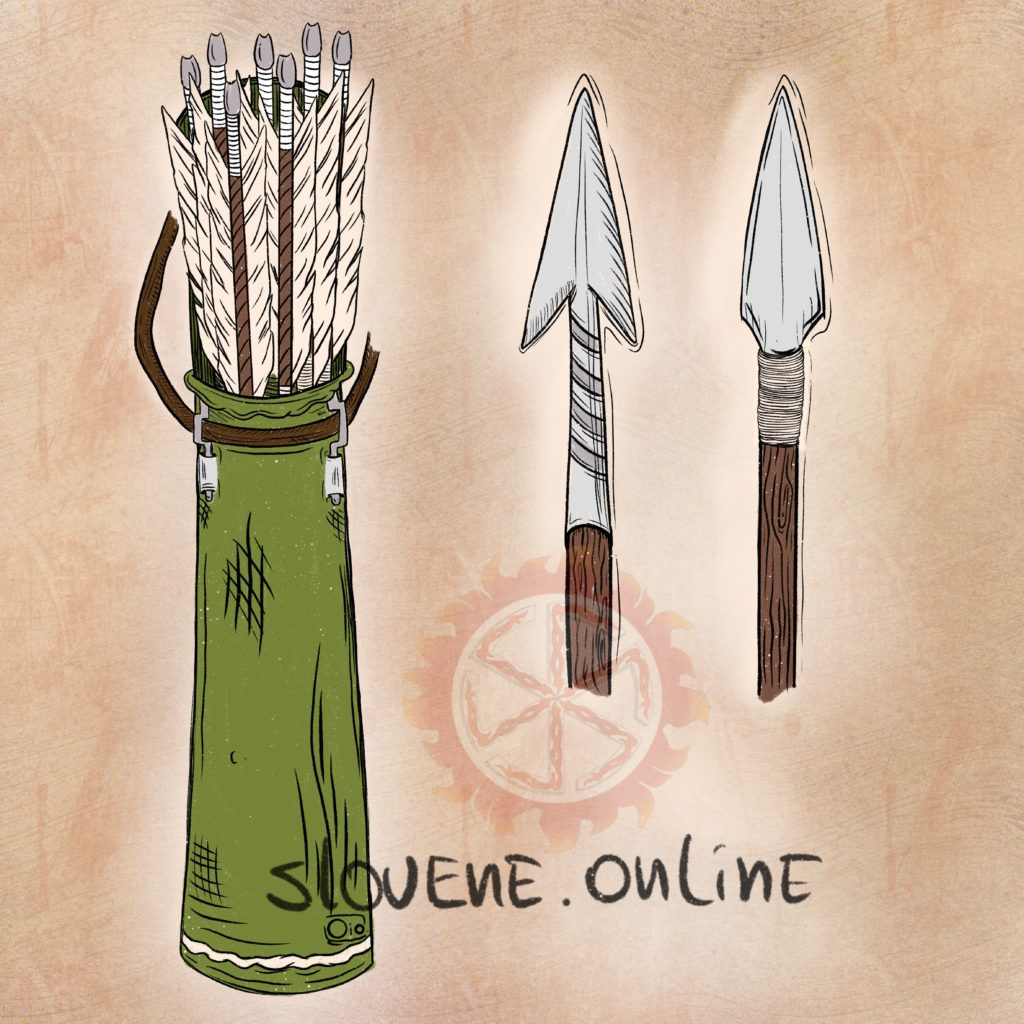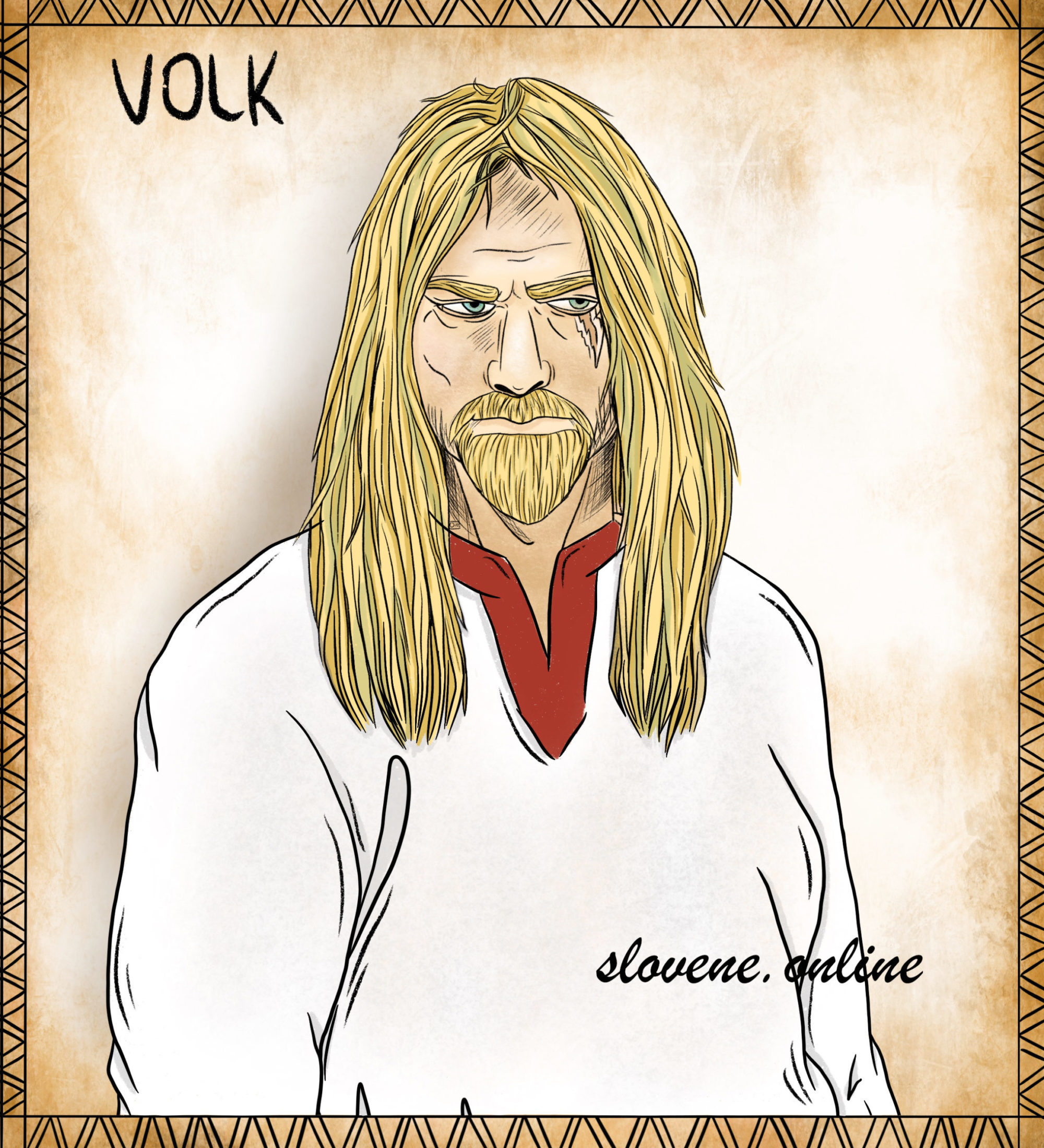The ancient Slavs called the case for arrows the “tul”, and the masters who made them the “tulniki”. Most often, these cases had a cylindrical shape and were made of birch bark, wood and leather. Usually their length was 60-70 cm, and the diameter at the bottom was 12-15 cm. Arrows were stored with the arrowheads down, and to prevent fletching from crumpling, an expansion was made at the top of the quiver.
The arrow shafts near the fletching were almost always painted in different colors depending on the purpose of the arrowhead, so that an archer could quickly get the right arrow in the appropriate situation.
The shape and purpose of the iron tips of the Slavic arrows were very diverse, but depending on the way of mounting it on the shaft they are divided into two types: see the picture. The right type was most commonly used by the Eastern Slavs, while the left type was more widely spread amongst the Western Slavs.


